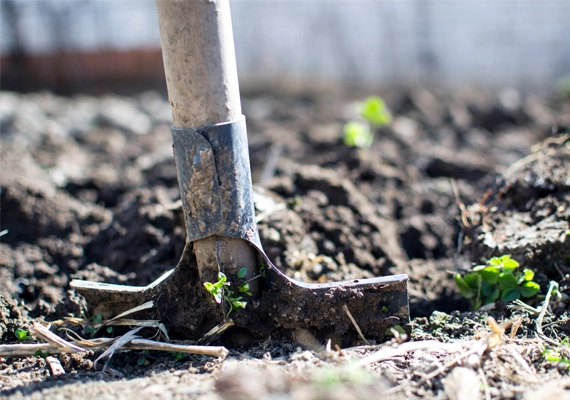
Polish farmers are accustomed to the idea that lime "works" for several years. It's no wonder, as the use of partially crushed rocks with dubious acid-neutralizing properties, which dissolve not just for a few years, but even for several hundred (or never), has convinced us that one liming treatment every few years is entirely sufficient to maintain optimal soil pH. However, soil acidification is a continuous process, and the farmer has very limited control over its course. Therefore, no producer of lime fertilizers can guarantee that liming will not need to be repeated in a much shorter time than we thought. Soil pH depends on too many factors for us to definitively say that lime will need to be applied next year in one field and three years in another. Can farmers prevent acidification? Yes, but only to a very limited extent because the greatest losses of CaO result from factors beyond human control.
Leaching
It is worth realizing that calcium compounds do not have a gaseous form, so they can't evaporate. However, they undergo another process, namely leaching into the depth of the soil profile. Annual losses of CaO can reach from 50 to several hundred kilograms per hectare. By using lime fertilizer before plowing, we bypass nature – we contribute to the introduction of lime so deeply that it cannot neutralize the topsoil and the root zone of plants, and natural leaching further hinders the liming process. Leaching is also exacerbated by the application of a single large dose of lime.
Acid rain
It probably doesn't need convincing that air quality in Poland is very poor. Air pollution standards for PM 2.5, PM 10, and benzo(a)pyrene are exceeded multiple times not only in major cities, as evidenced by monitoring reports from the Chief Inspectorate of Environmental Protection. Everything in the air, along with precipitation, ends up in the soil, contributing to acidification. Depending on the region of the country, it takes from 20 to 40 kg of CaO per hectare annually to neutralize acid rain, which represents another loss of a component over which we have no control.
Calcium removal with yields
There is no doubt – we lime to get a yield. But plants also take up calcium for their life processes, causing the removal of this component and contributing to acidification. We have no control over the physiological processes of plants, so surely this soil-acidifying factor should also be considered independent of humans. CaO losses due to removal with yields amount to approximately 40 kg per hectare annually.
Use of nitrogen and sulfur fertilizers
Nitrogen is an essential element if we want to achieve high yields, so omitting it in the fertilization plan will undoubtedly have repercussions on our wallets later on. From a chemical point of view, neutralizing 1 kg of applied nitrogen requires 1.0-1.5 kg of CaO, while neutralizing 1 kg of applied sulfur requires as much as 2 kg of CaO. Taking into account the fact that the average farmer in Poland applied about 73 kg of nitrogen per hectare in just the years 2011-2012, neutralizing such an amount of nitrogen requires from 73 to 109.5 kg of CaO. These are purely mathematical calculations, but they vividly show the significant impact of nitrogen fertilizers, which we cannot do without, on acidification.
Both natural and human-related processes cause a loss of at least 140 kg of CaO per hectare annually, and in intensive cultivation conditions, even over 200 kg of CaO. There is no effective way to stop the acidification process; the only solution is to correctly use lime fertilizers, which neutralize acidic pH and supply calcium. We are also unable to predict exactly how much the soil pH will drop within a year and whether liming will be necessary after just a few months, a year, or perhaps a much longer period. Soil tests and preventive, regular use of lime fertilizers according to the principle of more frequent but smaller doses may provide an answer!






